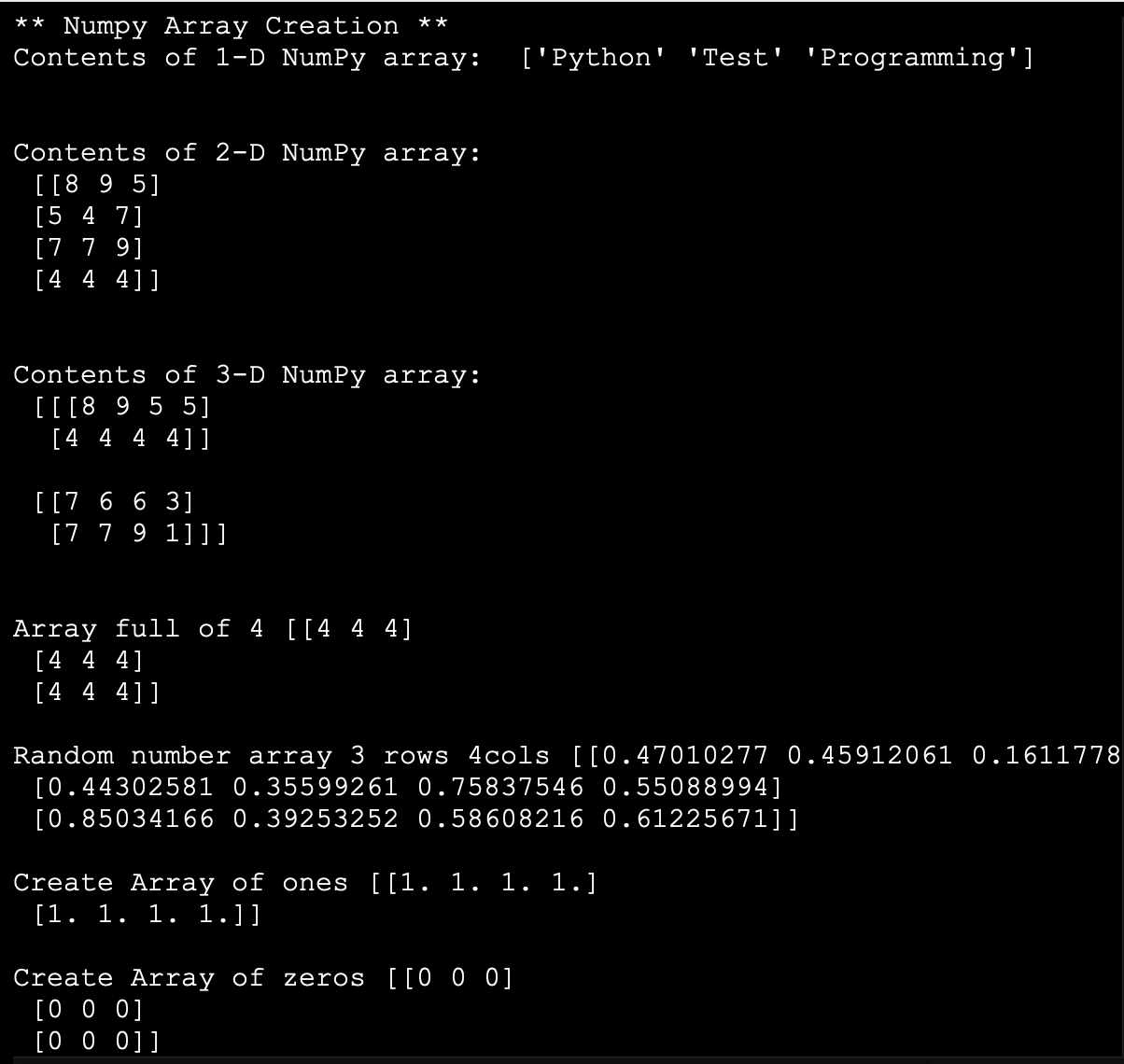NumPy Array Creation
In this tutorial you will learn:
- NumPy Array
- Dimensions of NumPy Array
- Common Functions of NumPy Array
NumPy Array
Array in NumPy is a data structure that is similar to Python lists but it's a lot more powerful since it allows us to manage N number of dimensions which helps us in making different mathematical calculations. We can define same type of elements in a NumPy array. The elements of a NumPy array are actually dtype objects ( data-type objects) and the array object in NumPy itself is called ndarray. We can use simple array function to create an a NumPy ndarray object. Let’s take a look at an example that creates NumPy array object and print the contents.
- import numpy as np
- nparr = np.array(["Python", "Test", "Programming"])
- print("** Numpy Array Creation **")
- print("Content of NumPy array: ",nparr)
Dimensions of NumPy Array
One of the biggest advantages of NumPy array is that it allows us to create arrays that can have N-Dimensions. It means that we can have a very deeply nested array. Let’s have a look at examples in which we will create arrays that are 2 level, 3 level and 4 levels nested.
Example
In this example we are creating an array which is 2-Dimensional. For that we write both arrays in a NumPy array function separated by a comma.
- nparr2 = np.array([[8,9,5], [5,4,7], [7,7,9], [4,4,4]])
- print("\n\nContents of 2-D NumPy array: \n",nparr2)
In this example we are creating 2-D array by creating an array within an array.
- nparr2 = np.array([[8,9,5], [5,4,7], [7,7,9], [4,4,4]])
- print("\n\nContents of 3-D NumPy array: \n",nparr2)
Here we are creating 3-D array by creating an array within an array up to three levels.
- nparr3 = np.array([[[8,9,5,5], [4,4,4,4]], [[7,6,6,3], [7,7,9,1]]])
- print("\n\nContents of 4-D NumPy array: \n",nparr3)
Common Functions of NumPy Array
Now let’s have a look at the usage of some common functions of NumPy. NumPy gives us functions that can fill the array with ones, zeros and random numbers. These functions are simple yet very powerful while developing Machine Learning algorithms in Python.
- print("\n\nArray full of 4" ,np.full((3,3),4))
- print("\nRandom number array 3 rows 4cols" ,np.random.random((3,4)))
- print("\nCreate Array of ones" ,np.ones((2,4)))
- print("\nCreate Array of zeros" ,np.zeros((3,3),dtype=np.int16))

